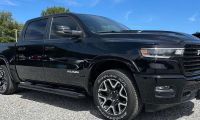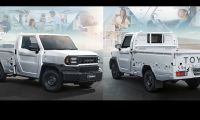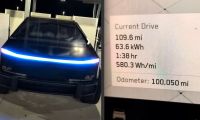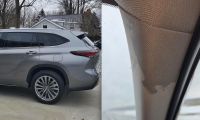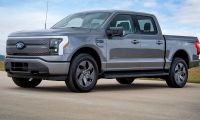Tesla's FSD package is one of the best driver assistance packages out there, but the technology obviously has its limits. Improving location accuracy is an essential part of the next generation of driving assistants. For this reason, Tesla has just registered a patent for a more precise multi-band GPS antenna that will be a great step forward for the next versions of its Autopilot system; although it will still take time some to be fully deployed, given the early stage of development.
According to what was registered at the United States patent office, we can basically see a small receiver that would be installed in a specific module of the interior rearview mirror. Inside a plastic molding, the – so far - most accurate multi-band GPS receiver will be installed; that improvement in location accuracy will not only affect Tesla's already excellent on-board navigator, but also have important applications to improve current autonomous driving assistants.

Tesla, as it is widely known, releases from time to time many updates for its FSD package. New functionalities and improvements in driving assistance that allow for more movement autonomy and driving flexibility to be gained; although it is still considered a level 2 autonomous system, that requires full attention from the driver at all times (since it is the driver ultimately responsible for all the actions in the car). The patent specifications do not include specific capacity data, but it is perfectly specified that in addition to improving location accuracy, the new GPS antenna consumes less energy resources from the battery, while reducing noise and production costs.
https://t.co/UBd4HEIspE@Tesla has applied to patent a new multi-band GPS antenna that it believes will be more precise for self-driving and navigation applications.@ElectrekCo has spotted the paperwork which defines the idea as a multi-band antenna system.
— Highways News (@highways_news) August 5, 2022
“A multi-band antenna system is provided. The antenna system can be placed under an exterior surface or embedded within an exterior glass surface of a vehicle. Such an antenna system may include a capacitively coupled metallic element on or adjacent to the outer glass surface that may serve as a parasitic element to improve gain and as a heating element to melt snow and/or ice buildup on the area. In certain applications, the antenna structure itself can be used as a heater to improve performance in bad weather conditions, while the heating elements are placed away from thermally sensitive electronics. The integrated heated antenna system may include a spiral antenna.

Regarding the use for improving driving assistants, the patent specifies: “GNSS antenna systems can be useful for providing Global Positioning System (GPS) signals and/or other signals to vehicle systems for different functions involving accurate location information. For example, signals received from a GNSS antenna can be combined with data from other sensors (e.g., ultrasonic sensors and/or cameras) to plan a route to take a vehicle to a target location, such as summoning the vehicle to the owner or another person. GNSS antenna systems can also be useful for other features that involve precise or general location information such as navigation, autopilot and other self-driving features, searching for nearby gas stations, restaurants, or businesses. GNSS antenna systems can also be useful for relaying precise or general location information for relaying pertinent information regarding the region and local advertisements”.
Source: highways-news
All images courtesy of Tesla Inc.
Nico Caballero is the VP of Finance of Cogency Power, specializing in solar energy. He also holds a Diploma in Electric Cars from Delft University of Technology in the Netherlands, and enjoys doing research about Tesla and EV batteries. He can be reached at @NicoTorqueNews on Twitter. Nico covers Tesla and electric vehicle latest happenings at Torque News.








